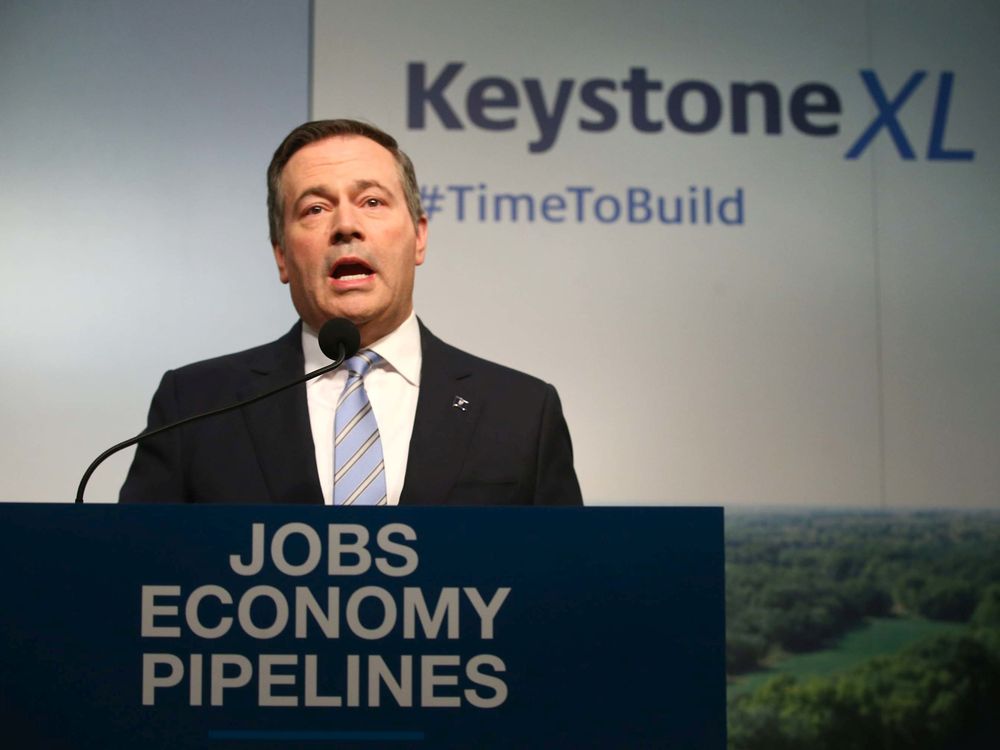For nearly two years now I have complained about the federal government’s purchase of the Trans Mountain pipeline.
I still believe it was mostly a political move.
The Trudeau government paid at least a billion more than the line was worth just so they could control whether it got built, according to their best political interests.
Not according to national interests. Or Alberta’s economic interests. But according to what was best for the Liberal Party of Canada.
They bought it so they could tell economic-minded voters in last fall’s federal election that they truly were concerned about jobs and finances. Then they deliberately went along with efforts by Indigenous radicals to delay the project in court, so they could say out of the other side of their mouths that were listening to First Nations and environmental concerns.
How is it any different, then, for the provincial United Conservative government to invest heavily in the Keystone XL pipeline to convince TC Energy to finish the project that will take over 800,000 barrels of Alberta oil to the U.S. Gulf Coast every day?
The truth is, there is a lot about the UCP move that is equally problematic with Ottawa TMX purchase.
However, there is one big difference — and I think it is the essential difference. The UCP truly want Keystone built. They’re investing in it because they believe in it.
I’ve never had full faith in the Liberals’ objectives.
It’s also critical that the Alberta government has not become the outright owner of the pipeline, the way the federal government has made itself the sole proprietor of the pipeline to the West Coast.
A private-sector company with a motive to get Keystone built remains in the driver’s seat. Important decisions over the design and construction are not being left to bureaucrats and politicians, the way they are with TMX.
For instance, remember the big fanfare last fall about work on Trans Mountain finally getting under way?
What work? Some rail cars full of new pipe got moved into position for nice photo ops. And a bit of trench got dug in Alberta where it was pretty obvious there would be few protestors.
Hmm, do you think those actions were based on real business considerations? Or is it possible they were merely symbolic, having more to do with the federal election than Trans Mountain’s bottom line?
There are huge risks to what the Kenney government is doing.
What if Donald Trump doesn’t get re-elected as U.S. president this fall and an anti-Keystone Democrat and Congress are elected? The project could get cancelled again, as it did during the Obama administration.
What if oil doesn’t come back up to $60 a barrel, as projected for 2021 and beyond? Or if Western Canadian Select lags way behind lighter grades of oil?
It was below $4 a barrel on Monday.
Moody’s, the credit rating service, actually downgraded TC Energy’s debt from stable to negative on the Alberta announcement. Moody’s was less worried about TC’s credit risk when it wasn’t building Keystone than after it said it was.
(On the other hand, the company’s share price rose by nearly seven per cent on the news.)
The way the Kenney government is investing in Keystone is smarter than the way the Trudeau government invested in Trans Mountain.
Rather than buying the line outright, it is buying $1.5 billion in shares now and guaranteeing loans of $6 billion next year. Both will be paid out once oil begins to flow in 2023.
As a taxpayer, I don’t like government intervention like this.
But in these crazy times, the Alberta boost is probably the only way to get this project done.


























